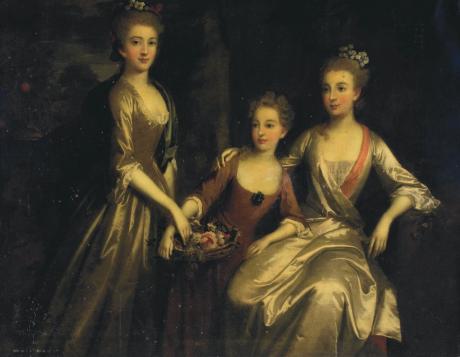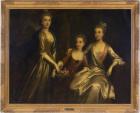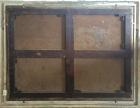Beach, Thomas (bap. 1737, d. 1806), portrait painter, was baptized at Abbey Milton, Dorset, on 4 April 1737, the second son of Thomas Beach and his wife, Ursula, née Bryer. He was educated at the grammar school in Abbey Milton, where he had shown such distinct artistic promise that Lord Milton sent him to London to study with Sir Joshua Reynolds from 1760 to 1762, when he was also enrolled at the St Martin's Lane Academy. By 1770 he had settled at 2 Westgate Buildings, Bath, where he soon acquired a profitable reputation among fashionable visitors and residents. In 1772 he joined the Incorporated Society of Artists, contributing to its annual exhibitions until 1783, when, like so many of his contemporaries, he changed his allegiance to the Royal Academy, where he showed from 1785 to 1790 and in 1797, when he exhibited a portrait of the prince of Wales (Royal Collection). During that time he was partly resident in London living at 3 Charles Street, St James's Square, and later at 54/55 Wigmore Street; like other artists, he followed the bon ton in its seasonal ebb and flow between the capital and Bath. The date of his marriage to Maria, née Vaughan, of whom he made a portrait (ex Sothebys, 23 March 1977), is unknown. It appears that she died before 1797, for from that year his sister, Frances, kept house for him. The couple were childless.
Like most provincial portrait painters of the time, Beach was dependent on the local patronage of the landowners. At Bath and London he also established a cosmopolitan clientele, including actors and critics whom he met through his interest in the theatre. One of his early portraits is of the actor John Henderson (1773; Garrick Club, London), with whom he was linked in a contemporary couplet:
Happy life's duties with its joys to blendReynolds his master, Henderson his friend.(Notes and Queries for Somerset and Dorset, 9, 1905, 67)
In 1782 he made two portraits of Sarah Siddons, who was performing that year in Bath. One, a formal portrait (Auckland Art Gallery, New Zealand), shows her looking up from an open book, as though she was learning a part, and may have been painted that summer in Dorset (Beach, 15). The second, inspired by Milton's Il Penseroso, portrayed her asMelancholy (ex Sothebys, 10 November 1992). Other theatrical portraits included those of Giusto Tenducci, an Italian castrato and noted opera singer (1782; priv. coll.), John Philip Kemble and Sarah Siddons in the dagger scene from Macbeth (1786; Garrick Club, London), and George Steevens, the Shakespearian commentator (c.1773–4; Dunedin Art Gallery, New Zealand), on the publication of his edition of Shakespeare's plays.
Beach was an assured figure painter and natural colourist, and was noted for his ability to capture a good likeness. Often in a feigned oval, his portraits were frequently signed and dated. Where appropriate he added an air of spontaneity by showing the sitter's head tilted and the mouth slightly open, to give an impression of the sitter speaking, an impression that was heightened by placing the sitter close to the front plane of the composition. His group portraits display a pleasing and provincial informality of arrangement, for example,The Stapleton Family (1789; Holburne Museum of Art, Bath). In 1798 he kept a diary, which, according to Elise Beach, great-great-grandniece and his biographer, was so prosaic that it recorded both the completion of thirty-one portraits and the time he went to bed each night. It was probably towards the end of that year that he decided to retire to Dorchester in Dorset. He continued to paint until at least 1802, the date of his Self-Portrait (National Portrait Gallery, London). Beach died in Dorchester, on 17 December 1806. In her biography Elise Beach listed 308 portraits by Beach.
R. E. Graves DNB



